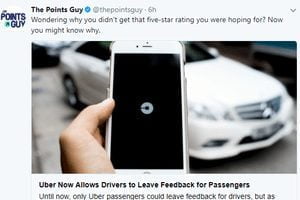The crossroads of affiliate marketing and influencer marketing is here. Merchants are testing ways to merge the channels to create sales.
The word “influencer” was mentioned in a dozen session titles under consideration for the upcoming Affiliate Summit West 2018 conference. Affiliate marketing is a proven channel, driven by data and quantifiable results. The question for merchants now is how to make influencer marketing as cost-efficient and profitable as affiliate marketing.
Public relations departments have been reaching out for years to bloggers and social media influencers. For branding, this strategy has proven effective. Influencers bring eyeballs and impressions to products and companies. A well-tailored campaign can spread awareness and familiarity because consumers trust the opinions of influencers.
How to Pay Influencers?
The marriage of influencers and PR began to fall apart when it came to monetization. Influencers started to understand their value and wanted to be paid for their time writing, editing, and taking lifestyle photos and videos of products. They started working with other influencers to create media kits with fees based on reach and engagement.
The marriage of influencers and PR began to fall apart when it came to monetization.
Brands began moving influencers away from PR and used influencers as bloggers, making them ambassadors. This gives the influencer-bloggers access to reviews and giveaways of the newest products and establishes them as experts in certain categories, such as fashion or baby products. This helps reassure consumers that the product is the right solution.
In recent years, many networks and platforms have been created trying to match brands with influencers. A brand creates an offer, adds funds to the network’s escrow account, and puts rules in place on how to promote the products. Frustrations can run high on both sides over creative control. And bloggers sometimes fail to adequately disclose the relationship.
This has brought the wrath of the U.S. Federal Trade Commission, which has issued updates and enforcement actions against those who abuse the influence they wield. Affiliates, brands, and managers all have liability in the process.
Hybrid Payments
Aligning business objectives with influencer campaigns is all about the data. Affiliate networks have reliable tracking, which allows for in-depth analysis and potentially larger budgets for successful campaigns.
Stephanie Robbins is C.E.O. of Robbins Interactive, which specializes in managing influencers through the affiliate marketing channel. She has seen success with many types of influencers but says online celebrities or mega influencers aren’t realistic prospects for most brands.
“Affiliate marketing allows the brand to capitalize on micro influencers,” Robbins said. “Micro influencers have less than 10,000 followers. They are powerful for direct-to-consumer sales because they are more attainable to the consumer and engage at a more intimate level.”
Managers such as Robbins have turned to a hybrid solution of a fixed fee plus commission to help control the costs and still reward the influencer-bloggers for their work. While it strays from the traditional affiliate marketing model of affiliates only getting paid based on their performance, it ultimately results in a better return on investment for all parties if successful.
If the influencer-blogger asks for $250 plus commission, the deal can be structured as follows: $50 to start the review, a bump to a higher commission rate, then bonus payouts for five-sales, 10 sales, 20 sales, and so on. If the goals are reached, the blogger has the opportunity to earn much more than the originally proposed fee.
Merchants should give influencer-bloggers a one-month notice on high-end campaigns and two weeks for general promotions. Bloggers need to schedule their posts in coordination with new product rollouts or major merchant promotions for maximum impact.
Sometimes part of the package includes merchants paying for Facebook ads of the blogger post. And it helps when brands supply bloggers with lifestyle photos of the products and issue key selling points to beef up the content.
Persistence Is Key
The biggest challenge to recruiting the right influencer partners is convincing them to test affiliate marketing. Many have tested it once and not seen any results, so they don’t test it again. They like to stick to the ambassador model — fixed fees and free samples — but they miss out on the long-term monetization opportunities. Affiliate marketing isn’t easy and it may take several tries working with the right brands and the right managers to see success.
The biggest challenge to recruiting the right influencer partners is convincing them to test affiliate marketing.
With thousands of bloggers considering themselves influencers, it’s a fine line for brands to determine which ones to work with. One of the pitfalls is pitches from seemingly relevant blogs with high social followers. They typically ask for free product to review and a giveaway product. And they charge an upfront fee for their time. The end results are sometimes eight clicks and no sales. The merchant is now out the cost of two products plus shipping and the placement fee. The return on investment is zero.
Instead considering high social counts, Robbins looks at engagement and relevance to the product. There is a difference between impressions, clicks, and sales. For the new hybrid system of fixed fees plus commissions to work, the emphasis needs to be on recruiting influencers that understand how to sell and not just “storytelling.”
But the hybrid solution helps manage expectations on both sides and helps keep both parties — merchants and influencer-affiliates — accountable for their roles in the campaign. The risk no longer rests solely on bloggers to provide content without getting anything for their efforts, nor is the affiliate manager left empty-handed after paying out for these campaigns. Brands need to see quantifiable results and bloggers need to understand how to achieve the results.

